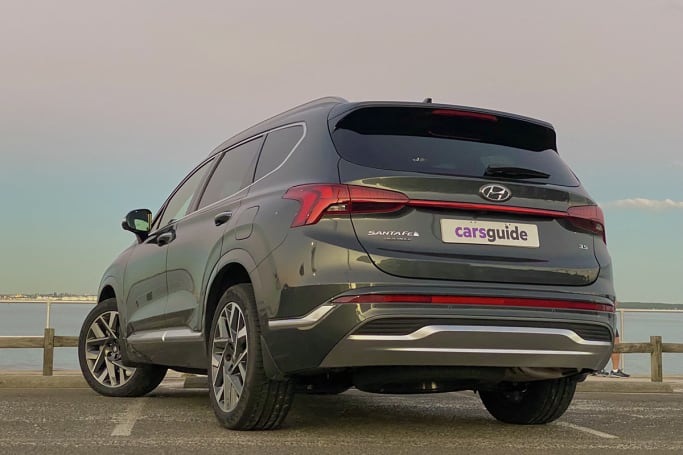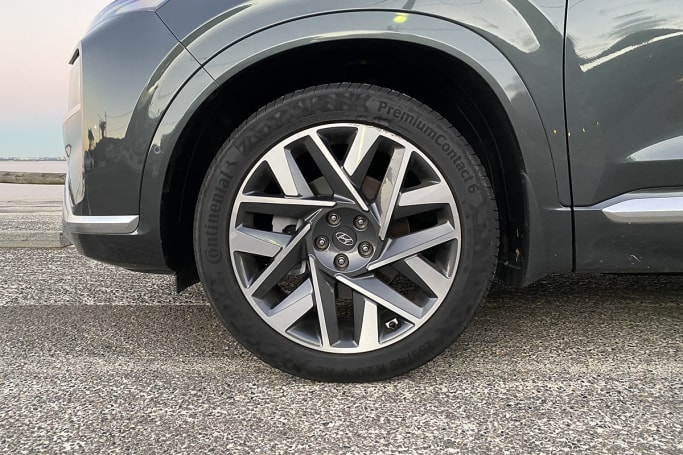The 2021 update isn't immediately obvious. I related this story to my modest Twitter following. I went out one morning for a drive in my own car to check something number one son thought was happening. I passed the car on the driveway and noticed the Santa Fe - parked on the street - had a big scrape on the left-hand side of the bumper, as though one of us had misjudged a concrete bollard.
Cursing myself as I lapped the suburb I came back and realised that, actually, that was next door's blue 2018 Santa Fe, not the chocolatey goodness of the 2021 Santa Fe on my driveway. I even laid hands on the blue one as I rubbed the scrape hoping it was chalk, as though I'd driven along the beach in Dover.

Anyway, everyone laughed at me, which is a good result on Twitter.
The point is that it's not immediately obvious what's happened in terms of changes, but it's quite a bit. There's a new grille, T-shaped daytime running lights and a general tightening has freshened things up, while ditching the unconvincing nature of the old grille. Out back, there's a Porsche-alike full-width reflector strip and the new 20-inch wheels are quite arresting to look at.

Inside, the Highlander scores the Palisade's flying console, the big new screen and a host of tweaks also make the Santa Fe's interior a lot more technical and, given it's the Highlander, separate it from the rest of the 2021 pack with a different look, helping (one imagines) the case for the more expensive variant.




















